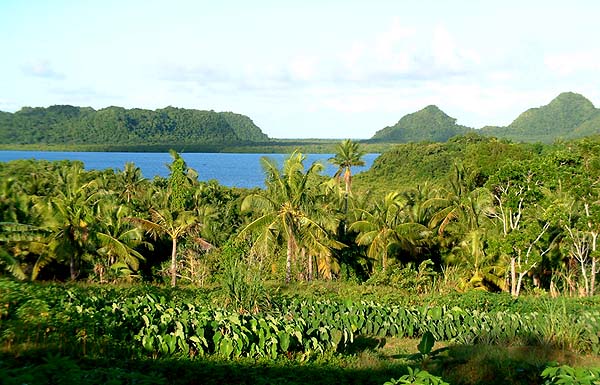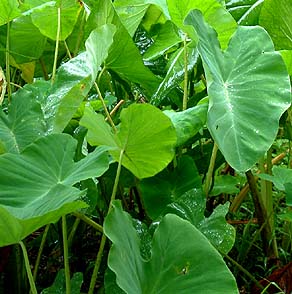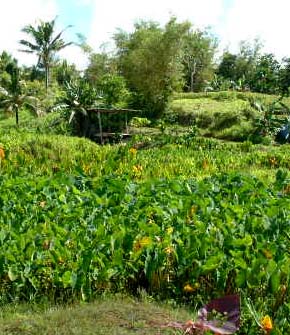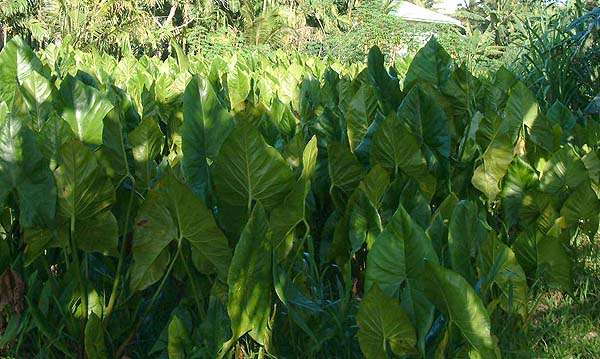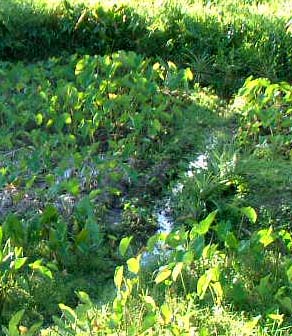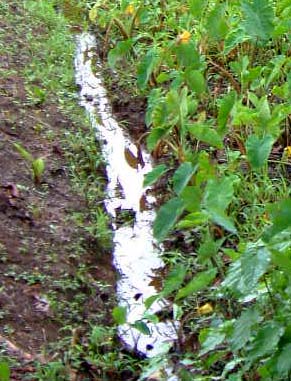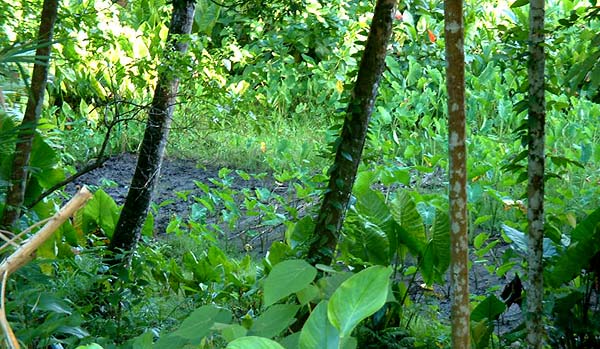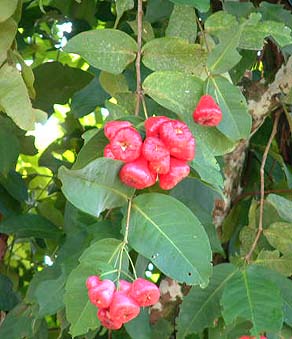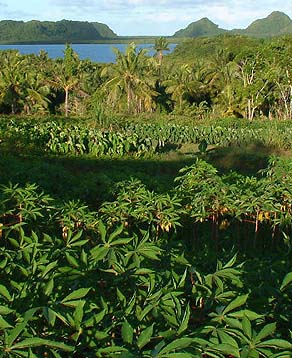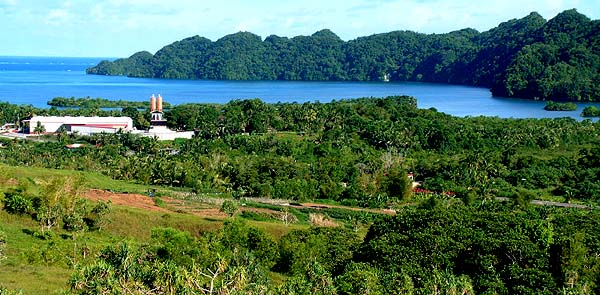 |
 |
 |
 |
||||
|
|
|
|
|
|
|
|
|
|
|
|||||||
|
|
|
|
|
|
“The taro patch is the main form of agriculture." Kathy states. "It’s the pride of every Palauan woman, and every Palauan woman must have a taro patch. If you don’t have a taro patch, you’re not considered a good wife or a good person to marry. "The taro patch is a daily activity for women. We wake up in the morning, then we get ourselves ready and go to the taro patch. And when we go to the taro patch, the taro patch is laid out in such a way that you know this area is for harvesting, the next one is coming up, and so forth. It’s an example of the sustainable concept, and women pay attention to the patches everyday."
|
||
|
|
||
“There’s a certain number of days when you go and work the soil, putting in the compost, putting it back on, and then get the plant and plant it. And there are certain steps and so forth for you to cultivate the taro. And everybody competes for the size of the taro you have. "The size of the taro patch, the kind of taro you plant, and so forth—it’s a main activity and women do it with pride and with all the hard work they can put into it to make it presentable. And that includes being productive, so that you have enough taro for daily consumption."
|
Swamp Taro.
|
|
“Women will have a small hut where, when it is really hot, they come and take a nap or cook some taro and have lunch and then go back to the taro patch, work, and then about four or five o’clock they return. But it’s like wallowing in the mud all day, so you’re muddy and your clothes are muddy. "You change to taro-patch clothes when you go to work the taro patches, and when you come back you go to the stream and wash yourself of dirt and then change. It’s dirty work.”
|
|
|
|
The giant dryland taro, brak.
|
“There are two kinds of taro. There’s what we call dry taro, and there is swamp taro. Swamp taro is the one that the women work with everyday. It’s the small one. The big one is the dryland taro. It still grows in the swamp, but the cultivation method is different. That one, you could just open this patch and put it in. That’s the big leafed one, and it’s easier to tend than the smaller one. So if you’re busy, you put the big taro there and forget it, and come back eight months later and harvest. “But the swamp-taro patches are much more work. The small taro is a little bit more sweet. The purple is the swamp taro, the women’s taro. It’s the one that you take care of. And then the yellow is the dry, the big one.
|
||
|
|
||
“Taro patches are in the lower elevation of the geography. There would be the village, and the taro would be in the depressed area, normally close to a water source, a river or something that comes down, and there will be taro patches there, next to it. "Taro needs a lot of water, and women know exactly how much water is needed. There will be small ditches that binds the taro patches around and every so often, the little dirt wall here would be broken to let out water or to let in water, depending on what they think should be done. "
|
|
|
“The management of it is integrated: this irrigation system is connected to the next irrigation system, that taro patch there, and so forth. Each woman knows that it is important, water it is important—that you cannot block the water from going to your neighbor’s taro patch. "But there is a way of funneling that water into the area, not from the big stream, but from a tributary of the big stream that comes into its channel and is used by all the women that share taro patches in a particular area. They have to work together, and they know that this stream should not be blocked. So they take care of it. "
|
|
|
|
|
“Around the taro patches, which are in depressed areas, there would be higher grounds where you would plant bananas, you would plant orange trees, you would plant fruit trees. These normally are part of the taro patches. Sugar cane, pineapples, just along the edges, not in the taro patches."
|
||
|
|
||
“The breadfruit trees, coconut, betel nut,” Walter adds. “You see a lot of them all over. The little red mountain apples are kídel, it’s an apple-like shape. This some are white, some are red. "The almond tree, we call it míich. The one with the red leaves? Their nuts are one of the important ingredients of a special food. When new rubak are going to bear title, the four ranking rubak, then they would throw a feast and make a dessert in the dugong shape, from the meat of these almond tree nuts.”
|
Rose apples (kidel).
|
|
“Now it’s beginning to turn towards having a tapioca garden," Kathy says. "That is still women’s work, but it’s less regarded than having the taro patch.” “Tapioca is a main source of starch,” Walter states. “You steam it, or just boil it. It is much easier and more convenient to get than taro. Taro is a lot of work. And tapioca is less than an half of hour, then you get it back to the house and peel it and cook it, much faster than taro. "People today are into California rice, and many younger people are much more used to rice than the taro.”
|
|
|
|
|
“The taro patches the same size that they have been, that I know of, since a hundred, two hundred years ago,” Kathy concludes. “They haven’t increased in size. But they have been producing taro all this time. In a place where women work diligently in the taro patches, it’s is a really good sight to see. When you stand up and look at all these different patches of taro and other products, each one belongs to a particular woman. "It’s hard work, it’s labor intensive, but it’s done with pride. It’s one of the criteria of being an independent woman in Palau. Still today.”
|
||
|
|
||
Taro cultivation is one of many traditions that remain strong in Palau today. Oral traditions are discussed in the next chapter, Footprints.
|
||
|
|
||
|
|
|
|
|
|

|
| Airai Home | Map Library | Site Map | Pacific Worlds Home |
|
|
|
|

|
|
|
|||
| Copyright 2003 Pacific Worlds & Associates • Usage Policy • Webmaster |
|||
